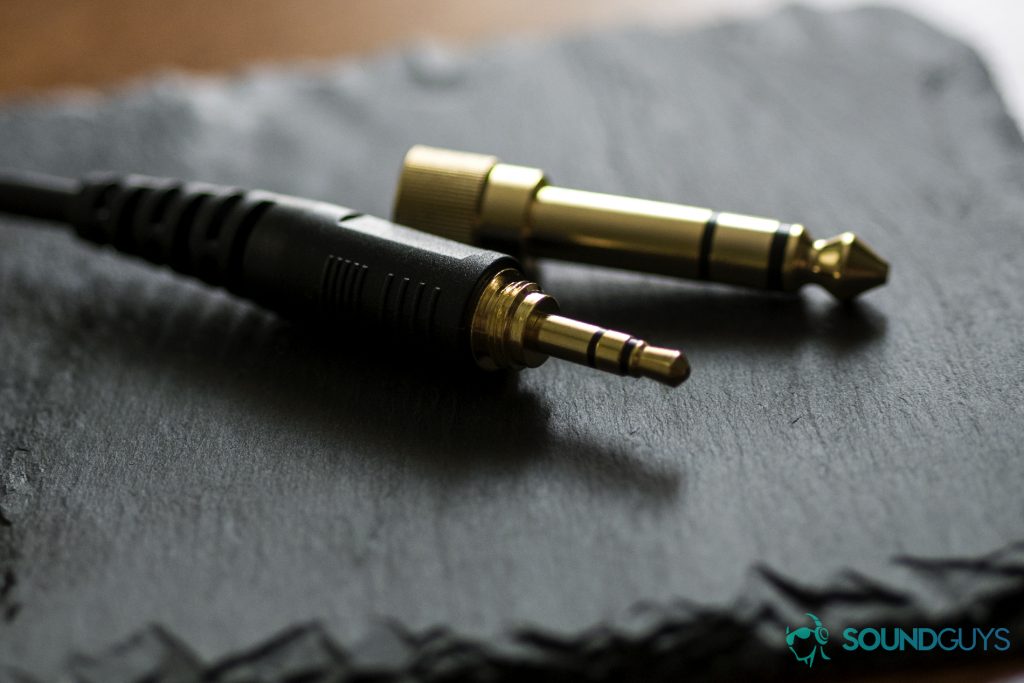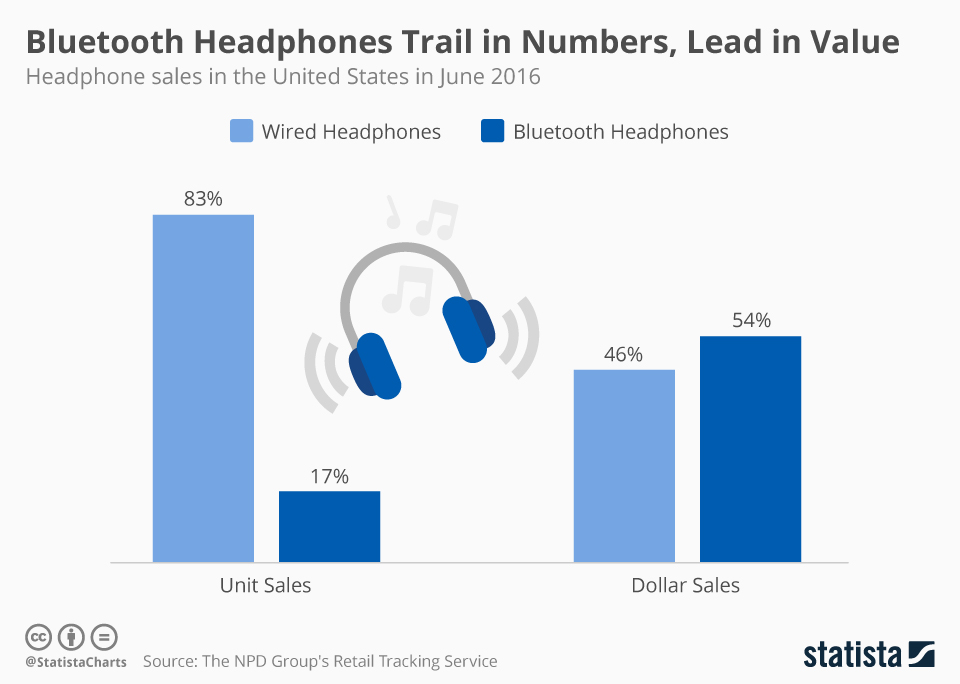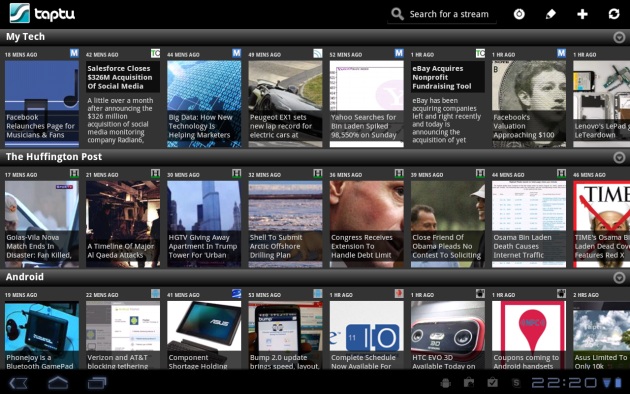Affiliate links on Android Authority may earn us a commission. Learn more.
Was ditching the headphone jack a good idea?

This post originally appeared on our sister site, SoundGuys.com.
With the new iPhones coming out today, I wanted to revisit the whole Apple vs. headphone jack fiasco. If you’re reading this article, you’ve probably got some strong opinions on this one—as do I. However, I want to approach this topic as a matter-of-fact discussion of the industry and not simply a venting of frustrations. We’re going to answer the title of this article in plain terms with little room for debate. As this article is like the countless others that follow Betteridge’s law of headlines, Journalism wonks already know the answer to that question: but it’s a subject worthy of complete exploration.
You see, I’m very disturbed by the trend of Android manufacturers affirming the false notion that Apple is a “tech leader” in ditching what is easily the cheapest, best, and most-used solution to audio on the go: The TRRS connector. While it’s understandable that many look to Apple as a leader in the tech world, in this case the headphone jack fiasco was nothing more than an attempt at a hostile takeover of the headphone industry, and Android may be the only thing standing in the way of that.
The main question here has several parts to it, so we should define some key ideas. Namely, we need to know:
- What makes a good phone?
- What’s the benefit of a headphone jack?
- Is Bluetooth good enough to replace it?
- Why would Apple ditch it?
I’ll try to answer these as briefly as possible, but some of these need to be truncated for readability.
What makes a good smartphone?

Stick with me, I’m going somewhere with this. When you want to do something that can’t be accomplished by just your words or hands, humans use tools. Tools to eat, tools to create, tools to destroy—we rely on the use of machines to accomplish most of the tasks we set out to accomplish in a day, and that’s how it’s been for millennia. Tools are an extension of the human experience at this point, and it’s no wonder: we simply can’t reach the heights we’re at now without mechanical help.
A full 2.5 million years after the first tools created by Australopithecus garhi, our tools perform stupendously complicated tasks—often thousands at once. While the capabilities of our tools have exploded past the wildest dreams of our early ancestors, the core metric by which we assess their quality hasn’t: Do they perform their task well? If the tool you hold in your hand can’t perform the function you want it to, it’s the wrong tool for the job… or it’s a bad tool. You don’t use pencils that can’t write, or an air conditioner that can’t cool, right?
Enter the smartphone. In the short time it’s been on Earth, it’s probably one of the most useful and ubiquitous tools humankind has created, second only to the thing that makes it so useful: the internet. The reasons for its success is that it’s a wildly useful tool: over the years, it’s been able to successfully assimilate and murder simpler tools by the dozen by offering them all in one tiny package. The point-and-shoot camera? Dead as hell. The portable DVD player? Murdered in cold blood. The MP3 player? Gone the way of the Dodo.
For better or worse, the ability to get music to your ears in a convenient fashion is now an essential part of what the world thinks a smartphone should do.
It’s that last little item I mentioned that brings us to our problem today. While the smartphone has been able to leverage its ability to stream massive content libraries over its data connection, it hasn’t quite yet provided a perfect alternative to headphones, nor the headphone jack. This is especially important because among 18-29 year olds, 87% of them have used their smartphones to listen to music streaming services in 2015. That number will go up the longer these services are available, and as those same kids age. For better or worse, the ability to get music to your ears in a convenient fashion is now—and will likely always be—an essential part of what the world thinks a smartphone should do. Consequently, a phone that eschews the most-used standard to consume audio also eschews its utility to consumers. It has become the wrong tool for the job: It just doesn’t work.
Why include a headphone jack?
It seems weird to extol the virtues of a piece of nearly 140-year-old technology in this day and age, but the reason why it’s persisted this long is that… it works. It’s a solved issue: not only is a TRRS plug cheap, but it’s durable, small, and high-quality. It can support inexpensive headphones, and it can support the best headphones—all with one universal standard. Not only that, but it’s an easy way to enable the use of microphones, as well. It’s a fantastically versatile piece of tech that hasn’t really been changed all that much since the plug was reduced in size to 3.5mm in the 1950s.
Obviously, a headphone jack isn’t the only way you can listen to music. Bluetooth headphones exist, and they work well for most people. But the problem is: they don’t work well for all people. Audiophiles probably aren’t too keen on being unable to listen to high-bitrate files, and there’s no shortage of reasons why you wouldn’t want to deal with the added hassles of wireless tech… Which is why smartphone companies have used both in tandem for so long: it offers the pickiest listeners quality that Bluetooth can’t currently touch, while enabling users who want to ditch the cable. There’s almost no reason not to have both, especially when the cost to manufacture is so cheap.

Given that so many people have decided that the smartphone is the heir to the portable MP3 player, consumers’ buying habits when it comes to smartphones are extremely important. And when it comes to which types of cans consumers prefer, wired headphones absolutely crush Bluetooth headsets in gross sales, despite how badly tech blogs misread this study that claims Bluetooth overtook wired headphones in 2016. The issue is that people lose sight of the gross figures in favor of the dollar sales figure. For those keeping score at home: before the arrival of the AirPods, wired headphones were outselling Bluetooth units with 83% of the total units to Bluetooth’s 17% share.
Considering that we’re talking about a base of consumers that probably don’t buy headphones every single year—especially if they spent more than $100 on their last pair—it doesn’t seem likely that 83% is an accurate assessment of how many people use the good ol’ analog plug as their primary vehicle for sweet, sweet music. That figure is probably higher, and wired headphones won’t be in the minority for a long, long time.

So why on Earth would you deign to alienate such an enormous segment of your potential audience? Well, if that data is any indication: it’s all about the money.
The Bluetooth situation
To say that Bluetooth is bad is completely unfair, as there are several advantages it enjoys over the traditional headphone jack. Not only can it wirelessly transmit audio of an acceptable quality, but it can also be used to control your listening device, and other peripherals. But Bluetooth still has a long way to go in order to dethrone the headphone jack in terms of performance. Bluetooth itself meets the needs of a large number of people, while the inherent tradeoffs make this debate about Bluetooth’s downsides a little more hazy. Nobody’s wrong for liking Bluetooth or wired cans more—so long as they’re honest about what they value in a set of headphones.
We’ve had this debate on SoundGuys before, me snarkily siding with wired cans, and Kris taking up arms for Bluetooth. However, I should point out that Bluetooth’s downsides are largely limited to consequences of having yet another battery, and a lack of cross-platform compatibility.

The latest and greatest headphones that support aptX or Apple’s proprietary AAC almost solve the quality gripes of years past, but not all phones support these standards. The market is extremely fractured in the Android universe, and while the Note 8 will deliver you the best version of aptX out there, the Google Pixel will not—making entry into Apple’s ecosystem extremely enticing for wireless headphone fans. By going all-in on Bluetooth, Apple has a major advantage over its competitors by guaranteeing the best performance with that tech while side-stepping the pitfalls of fractured compatibility.
However, excluding the headphone jack is still an extreme action that isn’t completely explained away by “Apple is better at Bluetooth.” Why would a company ditch the jack when the cost to meet the needs of every single one of your consumers’ listening habits is so easy to do? While the official line of ditching the headphone jack has been “not enough space,” we now know that excuse to be a lie: it’s definitely possible to cram in a headphone jack, it’s just not easy.
Why Apple ditched the headphone jack
Maybe it’s my provincial New Hampshire upbringing, but I place very little stock in people’s words. Instead, I pay very close attention to their actions to figure out what they’re all about. You could spin all sorts of yarn about God-knows-what, but I ain’t buying it unless I see a reason to believe you. That’s probably why I always curse and groan when I see statements like that of LeEco’s CEO Liang Jun explaining that headphone jack isn’t a necessity, or Apple’s insistence that ditching the headphone jack takes “courage.” Seriously, after reading the above section and noting how big a margin there seems to be on Bluetooth headphones, is it any wonder why Apple chose to abuse its status as a “market leader” to seize the opportunity to dominate another product category?
...Apple has essentially cornered the market on Bluetooth headphones, and they're eating up more and more of the developing segment
Money is a great motivator to do really crappy things, and Apple has done exactly that for decades now. You may think that Apple’s semi-predatory dongle addiction might be how they make cash off of killing the headphone jack, but the real answer is much more banal than that. It’s because they’ve basically bought Bluetooth headphones as a category, and are trying to eat up another market. Don’t believe me? Let’s take a look at who wins when Bluetooth overtakes wired headphones in sales.
Ever since Apple purchased a majority stake in Beats Audio for $3.2 billion in 2015, they’ve earned nearly half of all money spent buying Bluetooth headphones. When Apple kills headphone jacks on their products, they’re simultaneously trying to lock people into their own ecosystem, and increase demand for other high-margin products they peddle. On top of that, a smartphone without the headphone jack means Bluetooth headphones will be a major cash cow simply because the vast majority of listeners do not currently own Bluetooth headphones. It’s a smart business plan—but a giant middle finger to consumers, who now have to spend hundreds of dollars fixing a problem that didn’t exist until some literal Monopoly men in Cupertino decided it needed to be one.

The crazy thing is, it seems to be working… for now. Every market indication that I can find paints the same picture: Apple has essentially cornered the market on Bluetooth headphones, and they’re eating up more and more of the developing segment. And the situation is even more extreme if you take a look at the new category of “truly wireless” earphones. After the success it’s seen so far, why not continue strangling a nascent market in the crib? From the report linked above:
“More than 900,000 totally wireless headphone units were sold in the U.S. since the start of the year (2017), according to The NPD Group’s Retail Tracking Service… Since launching in December, Apple’s AirPods have accounted for 85 percent of totally wireless headphone dollar sales in the U.S., according to NPD’s Retail Tracking Service…Apple’s early domination of the category will continue to challenge competing brands entering the totally wireless market. New entrants will have to provide some differentiation in features, sound quality, or associated services and applications in order to stand out. Consumer reception of wireless earbuds is still forming, even as their use case continues to evolve.”
This doesn’t even touch the issue of headphone manufacturers being required to pay for licenses to use Bluetooth, or the increased difficulty in competing in this market, or even the environmental impact of using yet more batteries that fail over time and need to be replaced. Apple is behaving as if it were helmed by fictional business tycoon Jack Donaghy.
So what’s the problem?
Killing the headphone jack was good—for Apple’s bottom line. For the headphone industry, less so.
This is the part of the article where I get around to telling you something you already know. That is, a smartphone without a headphone jack isn’t a good tool. It’s an incomplete one, and one you shouldn’t buy. But it goes so much further than that—it’s profiteering off of people who might not be able to afford the changes Apple is foisting on them, and that’s something I take extreme issue with. Some people can only afford $20 headphones, and by God I want them to be able to use affordable units to enjoy their music. I have a sneaking suspicion that more than a few of you are a little pissed off at paying more for getting less, but there’s a lot to unpack in this discussion.

While it’s not exactly a mystery that a company will do whatever nets it more profit in the long run, pulling the headphone jack without a suitable replacement is one of those decisions that’s so cold and consumer-hostile that people should be angry about it. Bluetooth just isn’t where it needs to be to replace wired headphones completely, and that’s all there is to it. Include both the jack, and the Bluetooth, dammit.